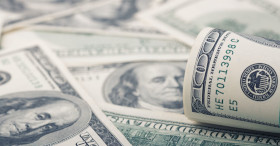The US dollar is trading flat against multiple G10 currency rivals on Tuesday, as the government reported that inflation accelerated last month. The greenback has been struggling as of late due to greater confidence in the broader financial market. But with the four-month rally seemingly fading, can the buck take advantage and regain its momentum? It all depends on the coronavirus pandemic.
According to the Bureau of Labor Statistics (BLS), the consumer price index (CPI) increased to 0.6% in June, up from the 0.1% reading in May. The June reading was the best level in three months, primarily due to economies reopening and businesses restarting operations. The biggest price hikes were concentrated in food (4.5%), medical care (6%), and housing (2.4%). There were declines in gasoline (-23.4%), apparel (-7.3%), and public transportation (-7%).
The annual core inflation rate, which eliminates energy and food, was unchanged at 1.2%.
The National Federation of Independent Business (NFIB) Business Optimism Index surged to 100.6 points last month, up from 94.4 points in the previous month. This is the best reading since February as the outlook for general business conditions over the next six months improved. Plus, many business owners believe it is a good time to expand their companies.
NFIB’s chief economist said in a statement:
Optimism about future conditions improved and small-business owners indicate they expect the recession to be short-lived. We’re starting to see positive signs of increased consumer spending, but there is still much work to be done to get back to pre-crisis levels.
Later this week, retail sales and housing data for June will be released.
Although equities are trading mixed on Tuesday, investor sentiment has recovered. For now, currency traders are seemingly unfazed by the resurgence in US coronavirus cases and renewed geopolitical tensions between the US and China. Overall, analysts believe currency movements could be driven primarily by macroeconomic trends rather than developments in the broader financial market.
Scotiabank analysts wrote in a recent research note:
If so, we think that this should support further gains in the euro and related currencies given that Europe appears to have managed and contained the COVID-19 outbreak more effectively than the US, for example, implying better economic prospects and more attractive investment return.
The US Dollar Index, which measures the greenback against a basket of currencies, tumbled 0.16% to 96.31, from an opening of 96.54. The index has wiped out all its gains and turned negative for the year. The index had been up as much as 4% at the height of the financial crisis earlier this year.
The USD/CAD currency pair edged up 0.01% to 1.3611, from an opening of 1.3610, at 16:19 GMT on Tuesday. The EUR/USD rose 0.04% to 1.1394, from an opening of 1.1385.
If you have any questions, comments, or opinions regarding the US Dollar, feel free to post them using the commentary form below.
